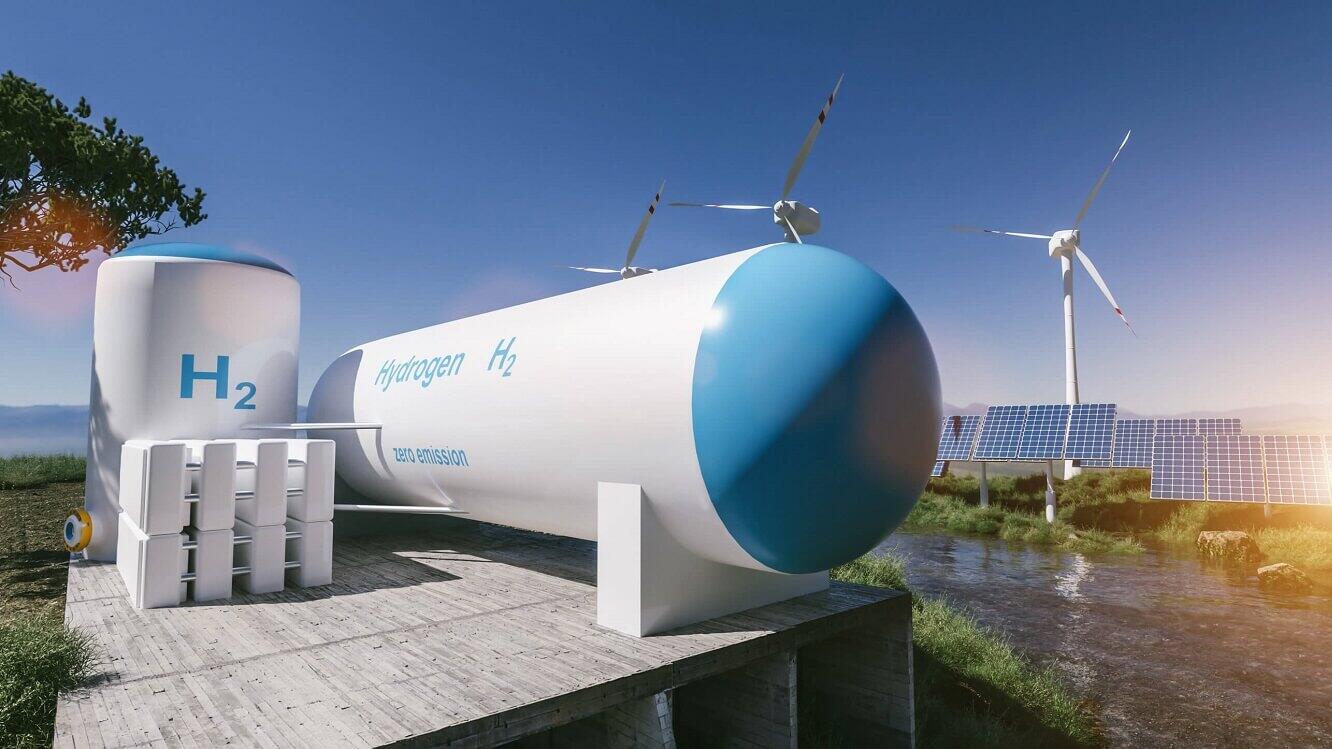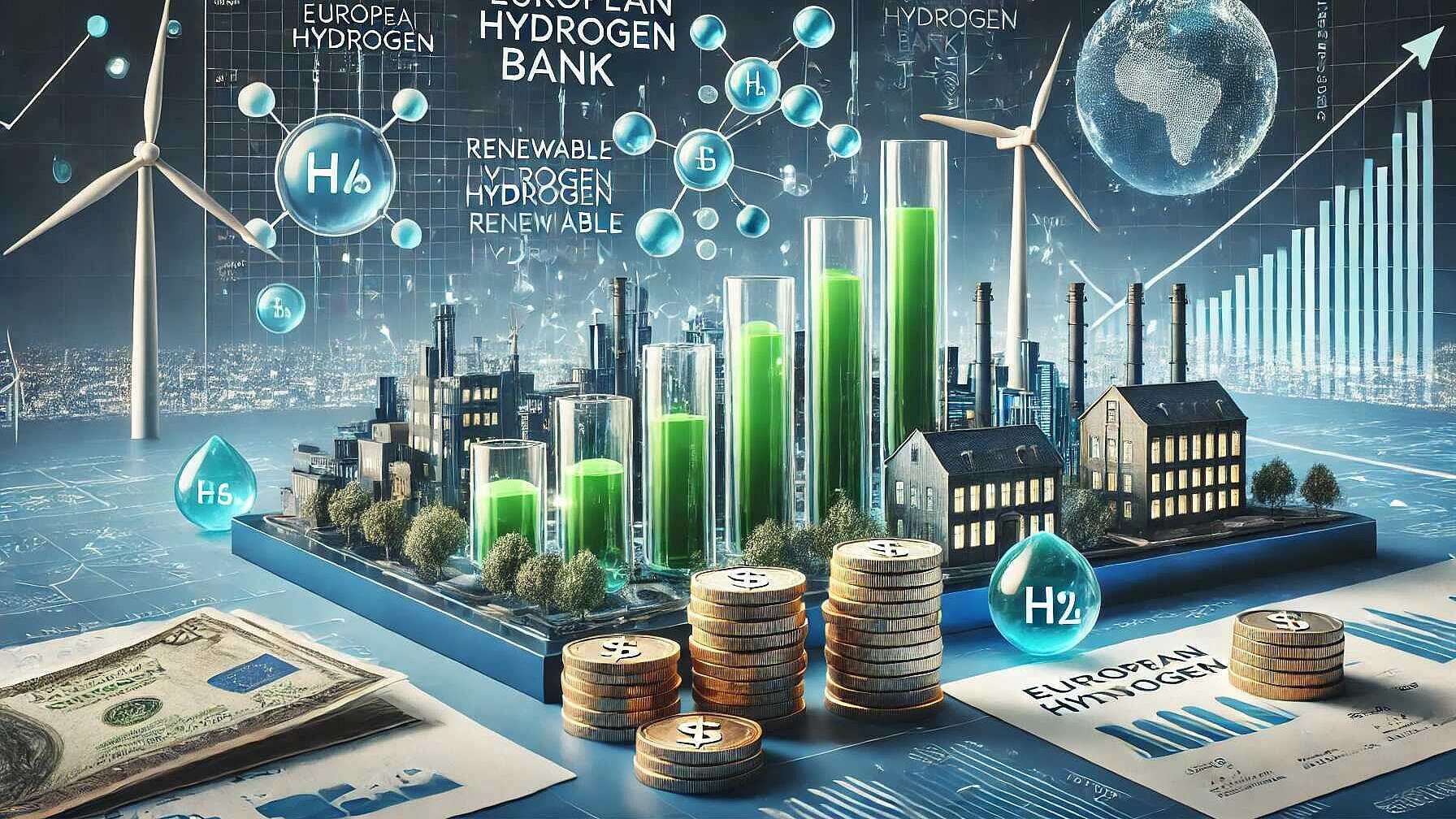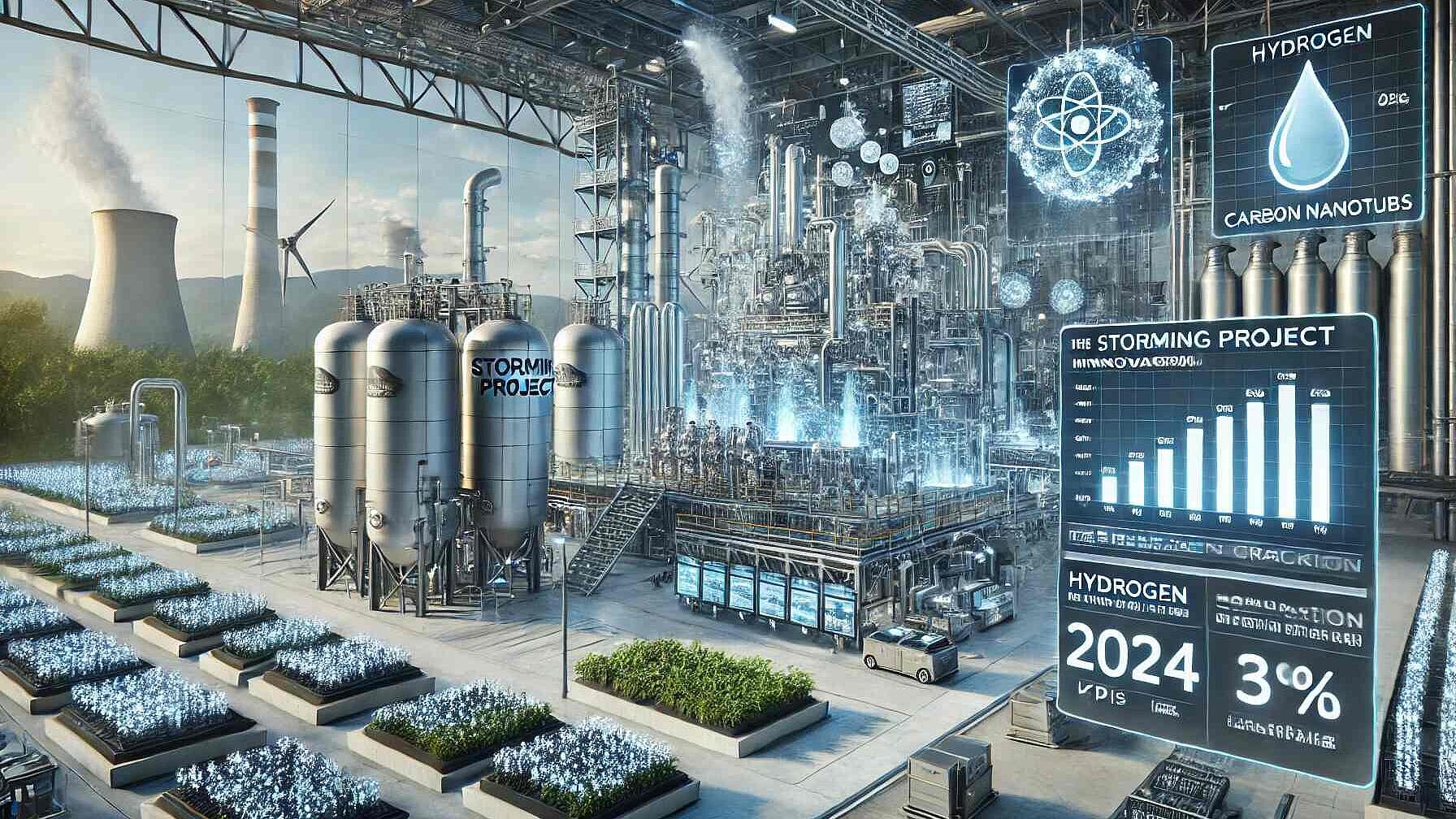 Energy Infrastructure
Energy InfrastructureHYDROGEN MEGATREND: GREEN HYDROGEN THE FUEL OF THE FUTURE?
Summary
Hydrogen is an all-rounder and can be used in many different ways. It is not only an energy carrier, but also used as a raw material for industrial purposes. In the future, hydrogen could be produced in large quantities through the use of renewable energies. hydrogen produced from green electricity is regarded as the energy carrier of the future. But its production has so far been expensive and complex, which is why its use should be preferred in areas where electrification is not possible. Green hydrogen would bring an additional plus in regional value creation, says Dr. Robert Kinsman. Kinsman:
The topic of hydrogen is not new: Research into hydrogen technologies has been going on for a long time: Since its discovery in the 18th century, there have been various applications. But where does hydrogen technology stand today and what applications are currently being pursued? We are inviting experts to contribute to an objective dialog on the subject to the debate on hydrogen infrastructure.
Open full article
HYDROGEN MEGATREND: GREEN HYDROGEN THE FUEL OF THE FUTURE?
HYDROGEN - AN ALL-ROUNDER
Great hopes are being placed in hydrogen as an energy carrier. Hydrogen seems to be the solution, especially for economic and industrial sectors that are difficult to decarbonize today and are burdened with high greenhouse gas emissions. As an all-rounder, hydrogen can be used in many different ways. It is not only an energy carrier, but is also used as a raw material for industrial purposes. However, its current production is very energy-intensive and associated with high emissions.
In the future, hydrogen could be produced in large quantities by using renewable energies. Technical processes that make this possible have been tested and are already in use. Thus, climate-neutral hydrogen could become the driving force behind a burgeoning hydrogen economy. We are taking a closer look at its many uses and applications and are inviting experts to contribute to an objective dialog on the subject of hydrogen.
The topic of hydrogen is not new. Research into hydrogen technologies has been going on for a long time. Since its discovery in the 18th century there have been various applications. But where does hydrogen technology stand today and what applications are currently being pursued? These are the questions we address in this special topic. One focus is on the contribution that climate-neutral hydrogen makes to the energy transition.
WHY USE HYDROGEN FOR THE ENERGY TRANSITION?
Hydrogen, or H2 for short, is not only the most abundant element in the universe. It is characterized by a wide range of useful properties. These make hydrogen attractive for use as an energy source. It has a high energy density, can be stored and transported in liquid or gaseous form. Its combustion produces no emissions.
The only drawback is that hydrogen does not exist on earth in pure form, but only in bound form. To use it as an energy carrier, it must first be produced. This is possible via various production processes. One of these is the power-to-gas process in conjunction with electrolysis. Under electric voltage, water (H2O) can be split into its components hydrogen (H2) and oxygen (O2) with the help of an electrolyzer.
However, in this process and in connection with an electrolyzer, energy is required - a lot of energy! And this is where renewable energy comes in, as it can provide the energy needed, but without producing emissions.
WHAT DOES COLOR TELL US ABOUT HYDROGEN?
Hydrogen by itself is a colorless element. Nevertheless, hydrogen produced via the power-to-gas process is referred to as "green." This coloring is done in conjunction with the power source, i.e., from which sources the energy needed to produce the hydrogen comes. If the hydrogen is green, green electricity, i.e. renewable energy, is used to produce it. In the case of "gray" and "blue" hydrogen, the energy required comes from fossil energy sources, i.e. coal, oil or gas are used as energy carriers. This results in emissions during its production.
Unlike gray hydrogen, the emissions from blue hydrogen are not intended to escape unhindered into the atmosphere. Instead, further storage steps are planned to bind the CO2 emissions and inject them into deep layers of the earth, for example. In the case of "turquoise" hydrogen, carbon residues remain in solid form and are also to be temporarily stored.
Both the production of blue and turquoise hydrogen are controversial with regard to the energy transition. According to critics, both do not lead to a shift away from fossil fuels, but rather to their continued use. Whereas green hydrogen is fed from renewable energies and thus clean energy can be used for electrolysis. This would therefore be able to be produced in a climate-neutral way.
EXTENDED ARM OF REGIONAL VALUE CREATION
Hydrogen produced from green electricity is regarded as the energy carrier of the future and is an important component of the energy transition. However, its production has so far been expensive and complex, which is why its use should be preferred in areas where electrification and direct use of renewable energy is not possible.
Some demonstration projects have already been implemented. In these, technical proof has been provided that green hydrogen can be produced via power-to-gas and the electrolysis process. Economic aspects are also being researched. Demonstration projects often lay the foundation for further projects to bring new technologies to market at the infrastructure level and on a larger scale.
Regions that have already invested in the expansion of renewable energies could benefit from the development of new hydrogen infrastructures. For them, green hydrogen would bring an additional plus in regional value creation. By installing and operating renewable energy plants, revenue beyond the "electricity harvest" could be generated through the development of a hydrogen infrastructure.
WHAT ARE THE APPLICATIONS FOR GREEN HYDROGEN?
Range of applications for green hydrogen and for sector coupling:
Green hydrogen can be used as an energy carrier and resource in the fields of energy and heat generation, industry, transport and buildings. In particular, it offers a wide range of applications for so-called sector coupling. The spectrum of its applications will be briefly outlined here without, however, going into further detail.
Green hydrogen for industry
Large quantities of hydrogen are already being used in industry. No new fields of application would have to be developed for these sectors. Rather, gray hydrogen could be replaced by green hydrogen. This would enable many industries with high emissions to reduce their emissions.
Generating electricity with fuel cells
Another option is to convert green hydrogen back into electricity. It can be converted into electricity by using fuel cells. In this way, green hydrogen could be utilized as a fuel, but could also be used to generate heat in buildings. Fuel cells would have potential in combination with PV and other renewable technologies, especially for decentralized energy supply and as a replacement for diesel generators. However, a lot of energy is lost in the re-conversion process.
Vehicles powered by green hydrogen
Vehicles powered by fuel cells are already on the market. Their penetration is low, as it is similar to the emergence of electromobility. The vehicles are expensive to purchase and to operate. In addition, the direct use of electricity in electric vehicles is more efficient and requires fewer plants to generate electricity. In addition, there is currently no nationwide hydrogen filling station network. However, this is being gradually expanded. By the end of 2021, around 100 hydrogen filling stations should be operational in Germany.
While the use of hydrogen vehicles in traffic is still restrained, there is more use of fuel cell vehicles in the field of so-called industrial trucks. Forklifts and tow tractors, for example, are powered by hydrogen propulsion technology. Fuel cell buses have also reached a high level of technical maturity and are used by urban transport companies. These are often hybrids combined with an electric motor.
Green hydrogen in rail and heavy-duty traffic
Electricity-based fuels, such as hydrogen, are also suitable for long distances, such as heavy-duty traffic on roads, but also for rail transport. The first hydrogen trains have already been tested on test tracks. But their number is manageable. Although they, as well as heavy-duty transport, are considered to have good utilization opportunities with regard to green hydrogen technology.
Green hydrogen in shipping and aviation
Equally intensive work is being done on hybrid aircraft and ships based on hydrogen technology. In the flight sector, the first prototypes have proven their functionality. The interaction of electric motor and fuel cell has been tested.
Hybrid-electric propulsion systems for ships could also be used in a climate-friendly way. Cargo ships and cruise liners, for example, could cover their electricity and heating requirements during their stay in ports by using fuel cells. Port cities are exposed to high environmental and emission loads caused by ships. Green hydrogen technologies could offer a clean alternative to diesel generators and free port cities from emissions.
WHAT IS CURRENTLY INHIBITING THE MARKET RAMP-UP OF A GREEN HYDROGEN ECONOMY?
As shown, there are a wide variety of potential applications for green hydrogen. Yet there is still little evidence of a market ramp-up of hydrogen applications. What is holding back the development of a hydrogen economy?
A number of hurdles could be cited here. For despite technological advances in recent years, for example in fuel cell manufacturing, materials research or efficiency gains in green hydrogen production, the technology remains cost-intensive. High manufacturing costs are a key barrier to rolling out the technology.
At the same time, other green technologies and applications are entering the market. Hydrogen applications must compete with these. Especially since many of the technologies are already mature - keyword electromobility, energy storage systems based on lithium-ion or digital energy efficiency systems. Reservations about the technology are also a central obstacle.
Thus, it is not only technological and financial factors that matter. Actors, structures, markets and a legal framework are needed for a green hydrogen economy to become established. Business cases for green hydrogen applications and an increased expansion of renewable energies are also required in order to be able to produce green hydrogen from clean energy sources at all.
At the same time, investments in a hydrogen infrastructure are needed, i.e. in addition to power-to-gas plants, investments are needed for logistics, storage and transport. Without start-up financing, as has happened with renewable energies, energy storage, electromobility and energy efficiency technologies, a hydrogen economy will not be able to develop sufficiently.
FUNDING PROGRAMS
In recent years, the German government has launched funding programs for hydrogen technology. Most recently, in summer 2020, it launched its "National Hydrogen Strategy" and with it the most comprehensive support for hydrogen technologies to date. With a catalog of a total of 38 measures, projects close to the market will be funded from the program in the coming years.
Further information on the funded projects can be found under the following link:
Hydrogen funding program of the BMBF
CONCLUSION
With regard to green hydrogen, numerous applications can be identified that make the technology attractive for further use of renewable energies. Only to get to this point, there are currently still a number of obstacles to overcome. These make dissemination difficult and stand in the way of the market development of a green hydrogen economy. However, an exchange of experiences and the identification of viable paths can help in the dissemination of hydrogen technology.
YOUR FEEDBACK IS NEEDED ...
- What questions are burning under your nails in connection with the topic of hydrogen?
- Do you know of interesting project examples?
- Do you have experiences with green hydrogen applications and projects that you would like to share?
If you are interested in a personal exchange, please feel free to contact us!



